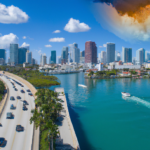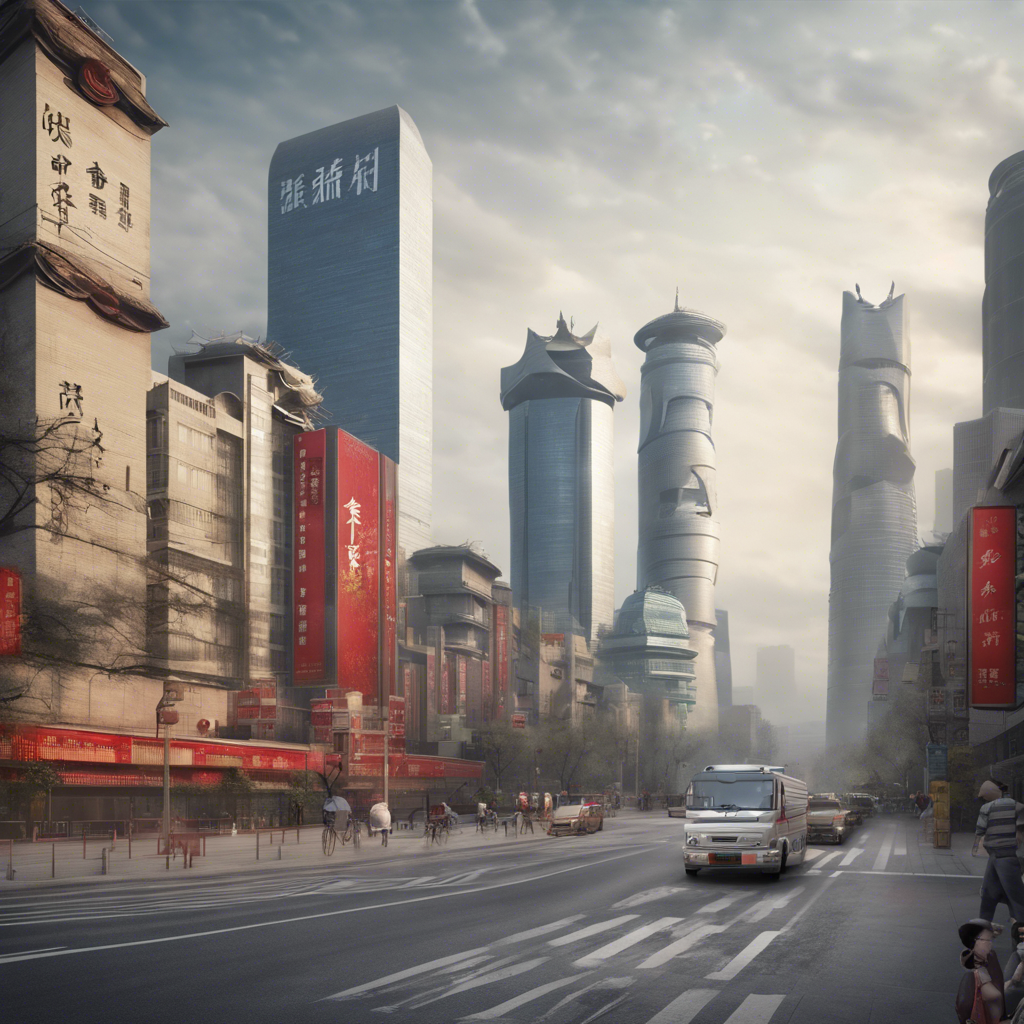
Exploring the Forbidden City in Beijing:
The Forbidden City, a UNESCO World Heritage Site, is a mesmerizing glimpse into China’s imperial past. Nestled in the heart of Beijing, this sprawling palace complex served as the home of emperors for nearly 500 years. With its rich history, stunning architecture, and vibrant culture, the Forbidden City is a must-visit for anyone exploring Beijing. In this article, we’ll delve into the allure of the Forbidden City, share the best activities for couples and families, highlight the nightlife, and provide essential travel tips for an unforgettable adventure.
A Brief History of Beijing:
Beijing, the capital city of China, has a history that spans over 3,000 years. Originally known as Ji, it became an important city during the Zhou Dynasty. The city was later named Beijing, meaning “Northern Capital,” during the Ming Dynasty in the 15th century. The Forbidden City was constructed between 1406 and 1420 as the imperial palace for the Ming and Qing dynasties, symbolizing the political and cultural heart of China. The city has witnessed significant events, including the Opium Wars, the fall of the Qing Dynasty, and the establishment of the People’s Republic of China in 1949.
Beijing, the capital of China, boasts a rich and complex history that spans thousands of years, reflecting the evolution of Chinese civilization. Here’s an exploration of the historical milestones that have shaped Beijing into the vibrant metropolis it is today.
Prehistoric Beginnings
The area that is now Beijing has been inhabited for hundreds of thousands of years. Evidence of early human presence, including the remains of Peking Man (Homo erectus pekinensis), was discovered at Zhoukoudian, dating back approximately 770,000 to 230,000 years ago. This discovery highlights the significance of the region in human evolution and sets the stage for the later development of the city.
Ancient Settlements
Around 3,000 years ago, during the Western Zhou Dynasty (11th century BC – 771 BC), a settlement known as Ji was established. This city served as a political and military center for the State of Yan during the Warring States period (475–221 BC). The strategic location of Ji made it a vital trading hub and a point of contention among various feudal states.
Dynastic Capitals
Throughout its history, Beijing has served as the capital for several significant dynasties:
Liao Dynasty (916-1125): The Khitan people established the Liao Dynasty and made Beijing, then known as Yanjing, their capital. This marked the city’s rise as an important political center in northern China.
Jin Dynasty (1115-1234): Following the Liao, the Jurchen people founded the Jin Dynasty, renaming the city Zhongdu. They expanded and rebuilt it, establishing it as a major urban center.
Yuan Dynasty (1271-1368): Kublai Khan, the Mongol leader, conquered China and made Beijing (then called Dadu, meaning “Great Capital”) the capital of the Yuan Dynasty. This period saw significant cultural exchanges and the city’s transformation into a cosmopolitan center.
Ming Dynasty (1368-1644): After the fall of the Yuan, the Ming Dynasty moved the capital back to Beijing in 1403, renaming it from Beiping (Northern Peace) to Beijing (Northern Capital). The construction of the Forbidden City began during this time, solidifying Beijing’s status as the imperial capital. The city was designed with a symmetrical layout, symbolizing the power of the emperor.
Qing Dynasty (1644-1911): The Qing Dynasty continued to develop Beijing, adding royal gardens and expanding the city. This era was marked by cultural flourishing and the consolidation of Beijing’s role as the political heart of China.
Modern Era :
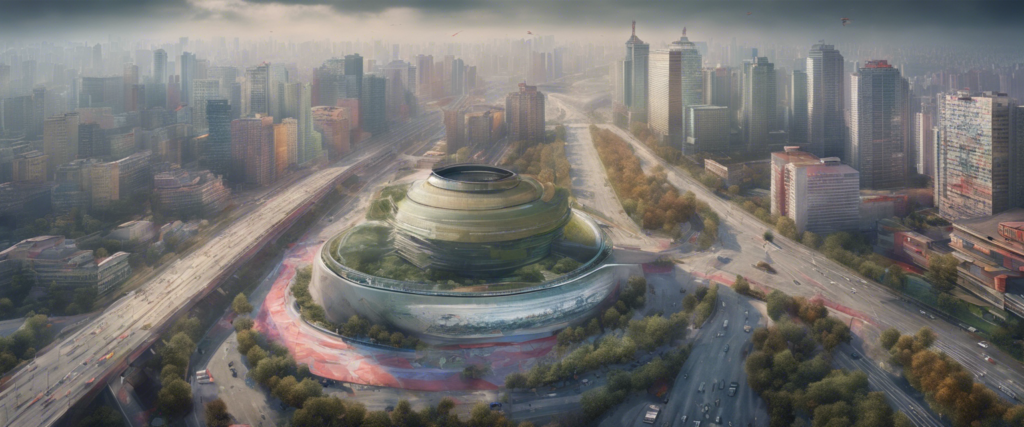
The 20th century brought significant upheaval to Beijing. After the fall of the Qing Dynasty in 1911, the city experienced a series of political changes, including the establishment of the Republic of China. During this time, Beijing was briefly renamed Beiping. The city was occupied by Japanese forces during World War II, leading to further turmoil.
On October 1, 1949, the People’s Republic of China was established, and Beijing was restored as the capital. Since then, the city has undergone rapid modernization while striving to preserve its historical heritage. The growth of infrastructure, such as the expansion of the subway system and the construction of modern skyscrapers, reflects Beijing’s transformation into a global city.
Conclusion
Beijing’s history is a tapestry woven from the threads of various dynasties, cultures, and significant events. From its prehistoric roots to its status as a modern metropolis, the city’s evolution is a testament to its resilience and importance in Chinese history. Understanding this rich past is essential for appreciating the vibrant culture and heritage that define Beijing today.
Overview of the Forbidden City:
The Forbidden City, known as Gùgōng (故宫) in Chinese, served as the imperial palace for 24 emperors during the Ming and Qing dynasties from 1420 to 1912. It covers an area of approximately 180 acres and consists of about 980 buildings, making it the largest and best-preserved ancient palatial complex in the world. The complex is surrounded by a moat and a massive defensive wall, emphasizing its status as a symbol of imperial power.
Key Highlights of the Forbidden City:
Meridian Gate (Wumen)
The Meridian Gate is the main entrance to the Forbidden City and serves as a significant ceremonial site. It features three openings, with the central one reserved exclusively for the emperor. Historically, this gate was where the emperor issued edicts and military commands. The grandeur of the Meridian Gate sets the tone for the opulence found throughout the complex.
Hall of Supreme Harmony (Taihedian)
As the largest and most important hall in the Forbidden City, the Hall of Supreme Harmony was the site of major ceremonies, including imperial weddings and coronations. The hall houses the emperor’s Dragon Throne and is adorned with intricate decorations that reflect the grandeur of imperial China. Its architectural design is a prime example of traditional Chinese aesthetics, featuring a golden roof and elaborate carvings.
Hall of Central Harmony (Zhonghedian)
Located directly behind the Hall of Supreme Harmony, this hall served as a resting place for the emperor before important ceremonies. It was here that emperors rehearsed their speeches and prepared for state affairs. The Hall of Central Harmony is smaller but equally significant, showcasing the meticulous craftsmanship of the era.
Hall of Preserving Harmony (Baohedian)
This hall was originally used for banquets and later became the venue for imperial examinations. Its design and decoration reflect the importance of education and governance in imperial China. The Hall of Preserving Harmony is a testament to the values of the time, emphasizing the significance of scholarly achievement.
Gate of Celestial Purity (Qianqingmen)
The Gate of Celestial Purity leads into the Inner Court of the Forbidden City. This area was the living quarters of the emperor and his family. The gate itself is a symbol of the transition from the ceremonial Outer Court to the more private Inner Court, where personal and administrative matters were handled.
Palace of Heavenly Purity (Qianqinggong)
This palace served as the emperor’s residence and was the site of significant state affairs. It is one of the most important buildings in the Inner Court, reflecting the emperor’s power and authority. The architecture of the Palace of Heavenly Purity is characterized by its elegant design and rich decorations, showcasing the artistry of the period.
Imperial Garden (Yuanyangyuan)
The Imperial Garden is a beautiful area within the Forbidden City, designed for relaxation and leisure. It features a variety of plants, ponds, and rockeries, creating a serene environment that contrasts with the grandeur of the surrounding palaces. The garden is a perfect spot for visitors to unwind and appreciate the natural beauty intertwined with imperial history.
Moat and Defensive Walls
Surrounding the Forbidden City is a 52-meter-wide moat and a 10-meter-high defensive wall, which served as both protection and a symbol of the emperor’s power. The moat is not only functional but also adds to the aesthetic appeal of the complex, reflecting the traditional Chinese belief in harmony between nature and architecture.
Cultural Relics and Museums
The Forbidden City houses an extensive collection of cultural relics, with over a million artifacts preserved within its walls. These include paintings, ceramics, and historical documents that provide insight into Chinese history and culture. The Palace Museum, located within the Forbidden City, serves as a repository for these treasures, making it a vital center for cultural education and preservation.
Architectural Features
The Forbidden City stands as a monumental testament to China’s imperial history, showcasing the architectural brilliance and cultural richness of the Ming and Qing dynasties. Each highlight within the complex tells a story of power, tradition, and artistry, making it an essential destination for anyone wishing to understand the depth of Chinese heritage. Whether you are captivated by its grand halls, intricate designs, or the vast collection of historical artifacts, the Forbidden City offers a profound glimpse into the heart of China’s past.
10 Best Things for Couples to Do in Beijing:
Beijing is a city rich in history, culture, and romance, making it an ideal destination for couples seeking memorable experiences together. Here are ten of the best things for couples to do in Beijing, offering a mix of adventure, relaxation, and cultural exploration.
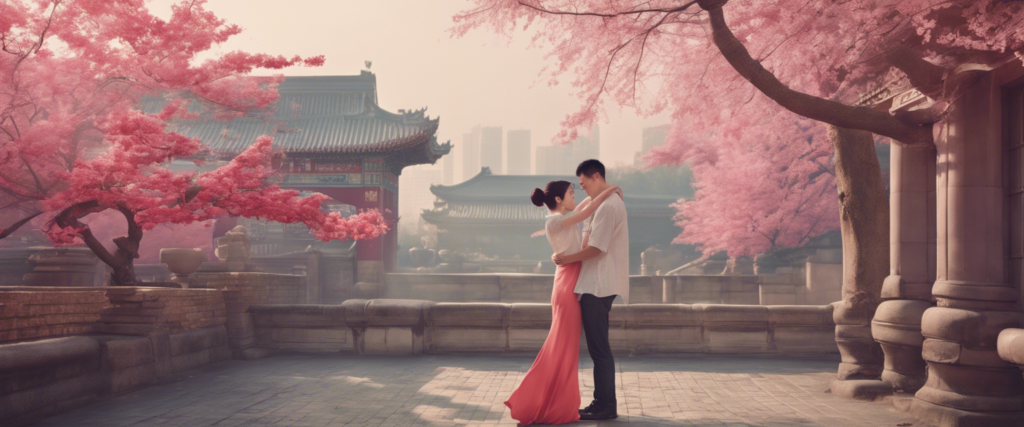
1. Stroll Through the Forbidden City
The Forbidden City is not only a historical marvel but also a romantic spot for couples. Wander hand-in-hand through the ancient halls, explore the beautiful gardens, and imagine the lives of emperors and empresses. The intricate architecture and serene atmosphere create a magical backdrop for a romantic day out.
2. Paddle a Boat on Houhai Lake
Rent a paddle boat or a traditional Chinese gondola on Houhai Lake. As you glide across the water, enjoy the stunning views of the surrounding ancient hutongs and the vibrant nightlife that lights up the area at dusk. This peaceful experience is perfect for couples looking to relax and connect.
3. Watch the Sunrise at Haituo Mountain
For adventurous couples, a trip to Haituo Mountain offers breathtaking views and an unforgettable sunrise. The mountain is about 130 kilometers from Beijing and provides a stunning panorama of the landscape. Arriving early to witness the sunrise together is a romantic way to start the day.
4. Enjoy a Romantic Dinner at the Sky-Viewing Revolving Restaurant
Located atop the CCTV Tower, the Sky-Viewing Revolving Restaurant offers a unique dining experience with panoramic views of Beijing. As the restaurant slowly rotates, couples can enjoy a buffet of Chinese and Western dishes while taking in the stunning cityscape, making it a perfect setting for a romantic dinner.
5. Explore the Imperial Garden at the Summer Palace
The Summer Palace is a beautiful retreat filled with lush gardens, tranquil lakes, and historic pavilions. Take a leisurely stroll through the Imperial Garden, where you can find quiet spots to relax and enjoy each other’s company. The scenery is particularly enchanting during the spring when flowers bloom.
6. Visit the Temple of Heaven
The Temple of Heaven is not only a significant cultural site but also a lovely park where couples can enjoy a peaceful walk. Participate in tai chi classes together or simply relax in the beautiful surroundings. The stunning architecture and serene atmosphere make it a perfect romantic getaway.
7. Experience the Nightlife at Sanlitun
Sanlitun is known for its vibrant nightlife, featuring a variety of bars, clubs, and restaurants. Couples can enjoy a night out dancing or sipping cocktails at trendy rooftop bars. The lively atmosphere and diverse options make it a great place to unwind and have fun together.
8. Take a Hutong Tour
Explore Beijing’s historic hutongs, narrow alleyways that showcase traditional Chinese architecture and culture. Many hutong tours offer food tastings, tea ceremonies, and visits to local artisans. This intimate experience allows couples to connect with the city’s heritage while enjoying each other’s company.
9. Relax at Beihai Park
Beihai Park is one of the oldest and most beautiful imperial gardens in China. Couples can rent a boat to paddle on the lake, stroll through the lush gardens, or simply sit by the water and enjoy the peaceful surroundings. The park’s beauty and tranquillity make it an ideal spot for a romantic picnic.
10. Visit the Blue Lavender Manor
Located about 25 kilometers from central Beijing, the Blue Lavender Manor is a charming destination for couples. From June to August, the lavender fields bloom, creating a stunning purple landscape. Couples can pick fresh lavender, enjoy a lavender hot spring, and take leisurely walks through the gardens, making it a delightful day trip.
Beijing offers a plethora of romantic activities for couples, from exploring ancient sites to enjoying modern nightlife. Whether you’re paddling on a serene lake, dining in a revolving restaurant, or wandering through historic hutongs, the city provides countless opportunities to create lasting memories together. Embrace the romance of Beijing and discover the magic it has to offer!
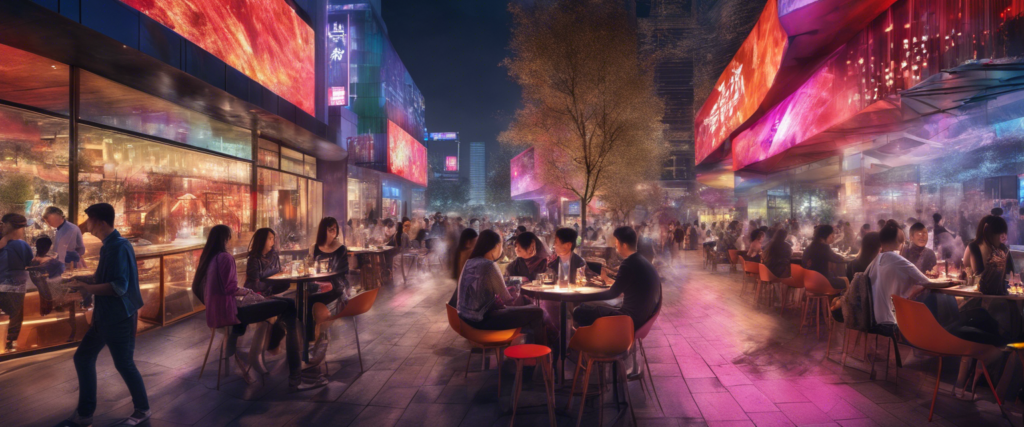
Nightlife in Beijing: The Best Nightclubs:
Beijing’s nightlife is vibrant and diverse, offering a plethora of options for party-goers and those looking to experience the city’s dynamic social scene. From high-energy nightclubs to laid-back bars, here are some of the best nightclubs in Beijing that cater to various tastes and preferences.
1. Vics
Located in the heart of Sanlitun, Vics is one of Beijing’s most popular nightclubs, known for its lively atmosphere and diverse music selection. The club features multiple dance floors, where you can groove to hip-hop, R&B, and electronic music. Vics is particularly famous for its “ladies’ night” on Wednesdays, where women can enjoy free cocktails, making it a great spot for a fun night out with friends.
Rating: 3.9
Address: WCMX+25R, Gongrentiyuchang N Rd, Sanlitun, Chaoyang, Beijing
Opening Hours: 12 AM – 6 AM daily
Phone: +86 10 5293 0333
2. Mix Club
Mix Club is renowned for its stylish interior and high-profile DJs, making it a favorite among locals and expats alike. With a focus on dance and hip-hop music, Mix offers a vibrant nightlife experience spread across two floors. The club often hosts international DJs, ensuring a lively atmosphere that keeps the dance floor packed until the early hours.
Rating: 3.8
Address: Gongrentiyuchang N Rd, Chaoyang, Beijing
Opening Hours: 8:30 PM – 5 AM daily
Phone: +86 10 6530 2889
3. Chocolate
Chocolate is a chic nightclub that combines a stylish ambiance with great music. Known for its trendy crowd and vibrant parties, this club features a mix of local and international DJs spinning a variety of genres. With its late-night hours and lively atmosphere, Chocolate is a perfect spot for couples looking to dance the night away.
Rating: 4.5
Address: Chaoyang, Beijing
Opening Hours: 8:30 PM – 5 AM daily
Phone: +86 10 8561 3988
4. Destination
Destination is a spacious, multi-level nightclub that provides a welcoming atmosphere for all. Known for its diverse crowd and inclusive vibe, this club features a mix of food, cocktails, and dancing. The vibrant energy and friendly environment make it a great place for couples and friends to enjoy a night out.
Rating: 4.4
Address: Sanlitun, Chaoyang, Beijing
Opening Hours: 7:30 PM – 3 AM daily
Phone: +86 10 6551 5138
5. Elements Club
Elements Club is a popular venue known for its eclectic music selection and lively atmosphere. With a focus on electronic and dance music, this club attracts a diverse crowd looking to enjoy a night of dancing. The modern decor and energetic vibe make it a great choice for those seeking a fun night out.
Rating: 4.1
Address: Gongren Tiyuchang Xilu, Chaoyang, Beijing
Phone: +86 10 5716 4660
6. Babyface
Babyface is a well-known nightclub that offers a unique lounge experience. The club features a large dance floor, VIP areas, and a stylish bar. Known for its high-energy atmosphere and diverse music, Babyface is a great spot for those looking to dance and socialize in a fashionable setting.
Address: 6 Gongti Xilu, Chaoyang, Beijing
Opening Hours: 8 PM – 5 AM daily
Phone: +86 10 6551 9081
7. Dada
Dada is an underground club that has gained a reputation for its eclectic music and laid-back vibe. Known for hosting local and international DJs, Dada offers a more intimate setting for those looking to enjoy a night of dancing without the pretentious atmosphere of larger clubs. The club often features a mix of genres, including techno and indie music.
Rating: Highly recommended by locals
Address: 206 Gulou Dong Dajie, Dongcheng District, Beijing
8. Janes+Hooch
Janes+Hooch is a trendy bar and nightclub that offers a relaxed atmosphere with a focus on craft cocktails and live music. The venue often features local bands and DJs, making it a great spot for couples looking to enjoy a more laid-back night out while still experiencing the vibrant nightlife of Beijing.
Address: Chaoyang District, Beijing
Phone: +86 10 6503 2757
9. Vplus Lounge
Vplus Lounge is a classy cocktail bar that offers stunning views of the Beijing Workers’ Sports Complex. With its intimate setting and stylish decor, it’s an excellent place for couples to enjoy a drink before heading out to dance. The lounge features a mix of music, creating a sophisticated yet lively atmosphere.
Rating: 3.5
Address: Gongrentiyuchang E Rd, Chaoyang, Beijing
Phone: +86 10 8587 1233
10. Sanlitun Bar Street
While not a single nightclub, Sanlitun Bar Street is a vibrant area filled with numerous bars and clubs, making it a hub for nightlife in Beijing. Here, you can find everything from laid-back pubs to high-energy clubs, catering to all tastes. The area is particularly popular with both locals and expats, providing a lively atmosphere for socializing.
Beijing’s nightlife scene is diverse and ever-evolving, with something to offer for everyone. Whether you prefer high-energy nightclubs, intimate lounges, or vibrant bar streets, the city provides a plethora of options for a memorable night out. Embrace the excitement of Beijing’s nightlife and discover the perfect spot to enjoy with friends or a special someone!
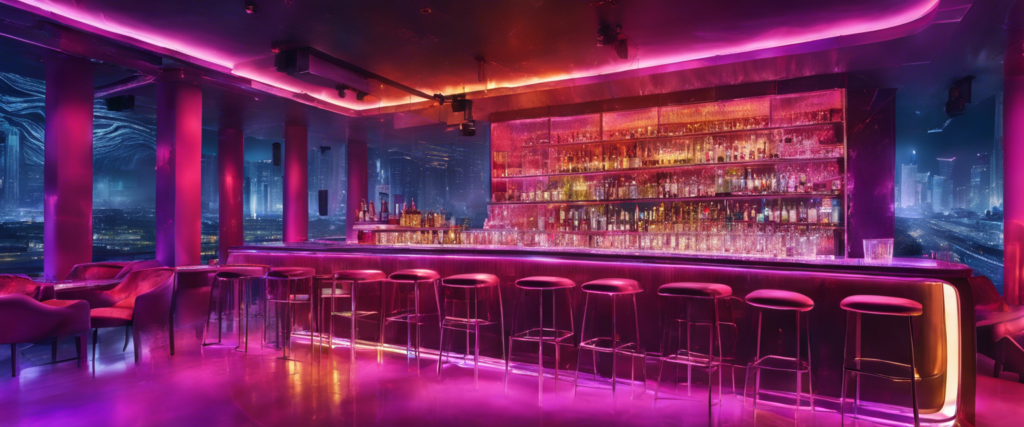
Top Restaurants and Cuisine in Beijing:
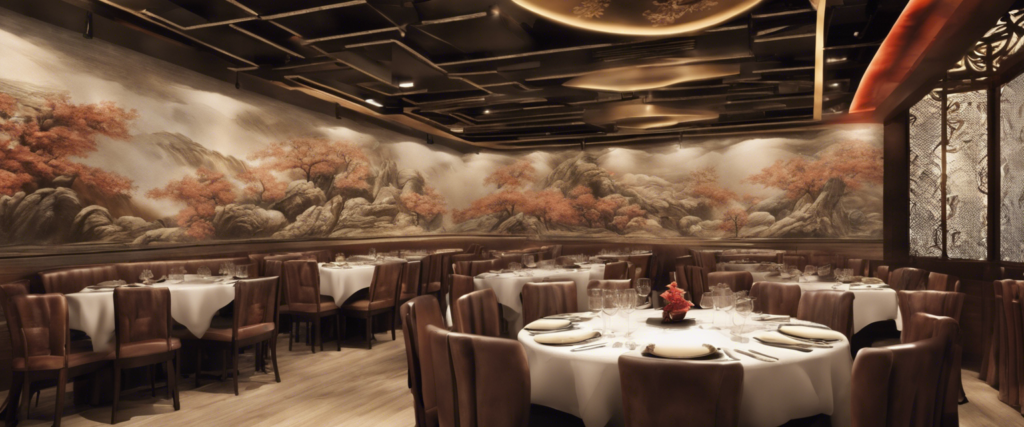
Beijing is a culinary paradise, offering a diverse range of dining experiences that reflect its rich history and cultural heritage. From traditional Chinese dishes to international cuisine, here are some of the top restaurants in Beijing that you should not miss, along with the unique culinary experiences they offer.
1. TRB Hutong
TRB Hutong is consistently rated as one of the best restaurants in Beijing, known for its exquisite European cuisine and elegant setting in a restored hutong. The restaurant offers a fine dining experience with a focus on seasonal ingredients and innovative dishes. The ambiance is sophisticated, making it perfect for a romantic dinner or a special occasion.
Rating: 4.9
Address: 23 Shatan North Street, Beijing
Phone: +86 10 8400 2232
Opening Hours: Daily from 11 AM to 2:30 PM
Website: TRB Hutong
2. King’s Joy
King’s Joy is a high-end vegetarian restaurant that offers a unique dining experience with its beautifully presented dishes and tranquil ambiance. The restaurant specializes in vegetarian cuisine, using fresh, organic ingredients to create innovative dishes that highlight the flavors of traditional Chinese cooking.
Rating: 4.4
Address: 2 Wudaoying Hu Tong, Dongcheng, Beijing
Phone: +86 10 8404 9191
Opening Hours: Daily from 11 AM to 10 PM
3. Haidilao
Haidilao is a popular hotpot chain known for its exceptional service and high-quality ingredients. The restaurant offers a fun and interactive dining experience where guests can customize their hotpot with a variety of broths and fresh ingredients. It’s a great place for groups and families to enjoy a hearty meal together.
Recommended Dishes: Fresh noodles, crispy meat, and various dipping sauces.
Price: Approximately 150 yuan per person.
Address: 8 Gongti North Road, Sanlitun, Chaoyang District
4. Fuchunju
Fuchunju is a prestigious restaurant that specializes in traditional Beijing cuisine. Known for its refined dishes and elegant setting, Fuchunju offers a taste of authentic flavors, including Peking duck and other regional specialties. The restaurant’s commitment to quality and presentation makes it a favorite among locals and tourists alike.
Rating: 5
Address: 1 Wangfujing Ave, Dongcheng, Beijing
Phone: +86 10 5280 6418
5. Azur Ju
Located in the Shangri-La Hotel, Azur Ju offers a luxurious dining experience with a focus on contemporary cuisine. The restaurant features a stylish setting and a menu that combines international flavors with local ingredients. It’s an excellent choice for a special night out or a business dinner.
Rating: 5
Address: 29 Zizhuyuan Rd, Haidian District, Beijing
Phone: +86 10 8882 6727
6. The Georg by Georg Jensen
This restaurant combines fine dining with a unique artistic flair, offering a menu that emphasizes seasonal and locally sourced ingredients. The Georg is known for its creative dishes and elegant atmosphere, making it a great spot for couples looking to enjoy a sophisticated meal.
Address: 45 Qiao Hutong, Dongcheng District, Beijing
Phone: +86 10 8408 5300
7. Mojo
Mojo is a trendy bar and restaurant known for its vibrant atmosphere and creative cocktails. The menu features a mix of international dishes and local favorites, making it a popular spot for both dining and nightlife. It’s an excellent place to unwind after a day of exploring the city.
Address: Beijing Workers’ Stadium East Gate, Chaoyang District, Beijing
Phone: +86 10 5352 0033
8. Bai Jia Da Yuan
Bai Jia Da Yuan is a garden restaurant that offers a unique dining experience in a traditional setting. The restaurant serves imperial cuisine and features beautiful pavilions and gardens, creating a picturesque backdrop for a meal. The staff wears traditional costumes, adding to the authentic atmosphere.
Recommended Dishes: Court barbecued pork, crispy fried duck, and Bai Family fried shrimp.
Price: From 360 yuan per person.
Address: 15 Suzhou Street, Haidian District
9. Hua Jia Yi Yuan
Hua Jia Yi Yuan is known for its traditional Chinese dishes served in a beautiful setting. The restaurant offers a variety of regional specialties, making it a great place to explore different flavors of Chinese cuisine. The unique decor and ambiance enhance the dining experience.
10. Duck de Chine
Duck de Chine is famous for its Peking duck, a must-try dish when in Beijing. The restaurant combines traditional cooking methods with a modern dining experience, offering a range of duck dishes and other Chinese specialties in an elegant setting.
Address: 1949 The Hidden City, 1 Gongti North Road, Chaoyang District, Beijing
Phone: +86 10 6417 6688
Beijing’s culinary scene is a reflection of its rich history and diverse culture, offering a wide range of dining options that cater to all tastes. From fine dining establishments like TRB Hutong and King’s Joy to casual hotpot spots like Haidilao, there’s something for everyone. Exploring the city’s restaurants not only satisfies your taste buds but also provides a deeper understanding of the local culture and traditions. Whether you’re looking for a romantic dinner, a family gathering, or a casual meal with friends, Beijing’s restaurants promise an unforgettable dining experience.
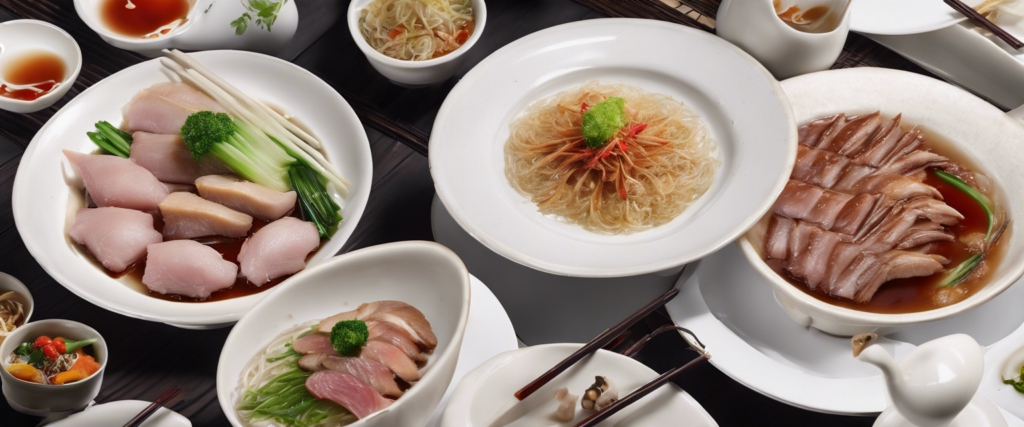
Top 15 Things for Families to Do in Beijing:
Visit the Beijing Zoo: Home to giant pandas and a variety of animals, the zoo is a fun outing for families.
Explore the Science and Technology Museum: Interactive exhibits make learning fun for kids of all ages.
Wander Through the Summer Palace: Enjoy the beautiful gardens and take a boat ride on Kunming Lake.
Climb the Great Wall: A family adventure that offers stunning views and a sense of accomplishment.
Visit the National Museum of China: Discover China’s rich history and culture through engaging exhibits.
Explore the 798 Art District: A vibrant area filled with contemporary art galleries and installations.
Take a Hutong Tour: Experience traditional Beijing life and culture in the historic alleyways.
Enjoy a Kung Fu Show: A thrilling performance that showcases China’s martial arts heritage.
Visit the Beijing Aquarium: Home to a variety of marine life, including sharks and dolphins.
Explore the Forbidden City: Engage the whole family with stories of emperors and ancient China.
Take a Bike Ride Around the City: Rent bikes and explore Beijing’s parks and neighborhoods.
Visit Tiananmen Square: Learn about China’s history and see important monuments.
Enjoy a Family-Friendly Restaurant: Try out places like Grandma’s Kitchen for a relaxed dining experience.
Attend a Local Festival: Experience Chinese culture through traditional festivals and events.
Visit the Beijing Planetarium: A fun and educational experience for astronomy enthusiasts.
Transportation in Beijing:
Beijing is a sprawling metropolis with a well-developed transportation network that makes it relatively easy to navigate. Here’s a comprehensive overview of the various transportation options available in the city, along with tips for getting around efficiently.
1. Subway System
Beijing’s subway system is one of the largest and most efficient in the world, consisting of 29 lines that cover a vast area of the city and its suburbs.
Efficiency: The subway is immune to the city’s notorious traffic jams, making it a preferred choice for both locals and tourists. It connects major attractions, including the Forbidden City, the Great Wall, and the Summer Palace.
Cost: Ticket prices start at 3 yuan (about 43 cents) and can go up to 9 yuan (about $1.30) depending on the distance traveled. You can purchase single tickets or a rechargeable transportation card at any station.
Accessibility: English signage and maps are available at most stations, making it easy for non-Chinese speakers to navigate the system.
Operating Hours: The subway operates from 5 AM to 11 PM, with extended hours on weekends for certain lines.
2. Buses
Beijing has an extensive bus network with nearly 30,000 buses operating across over 1,000 routes.
Coverage: Buses reach almost every corner of the city, including popular tourist sites and residential areas.
Cost: Fares start at 2 yuan (about 30 cents) for most routes, with additional charges based on distance. Night buses operate from 11 PM to 4:30 AM.
Challenges: While buses are an economical option, they can be crowded, especially during rush hours. For first-time visitors, navigating the bus system may be challenging due to the language barrier, as route numbers and announcements are primarily in Chinese.
3. Taxis
Taxis are a convenient and relatively affordable way to get around Beijing.
Cost: The flag-down rate is 13 yuan (about $1.90) for the first 3 kilometers, with additional charges of 2.3 yuan per kilometer thereafter. Rates increase slightly after 11 PM.
Communication: It’s advisable to have your destination written in Chinese characters to show the driver, as many may not speak English.
Availability: Taxis are widely available, but during peak hours, it may take longer to hail one due to high demand.
4. Bicycles
Biking is a popular way to explore Beijing, especially in areas with bike lanes and parks.
Bike-Sharing: Numerous bike-sharing services, such as DiDi Bike and Hello Bike, allow you to rent bicycles easily via mobile apps. This is a great option for short trips and exploring neighborhoods at your own pace.
Cost: Rental fees are typically low, and many services allow for cashless payments through apps like WeChat Pay or Alipay.
5. Airport Transportation
Beijing Capital International Airport (PEK) and Daxing International Airport (PKX) serve as the main gateways to the city.
Airport Express: The Airport Express train connects PEK to the city center, taking about 30 minutes and costing 25 yuan (about $3.50). Daxing Airport also has an express train service.
Taxis and Shuttles: Taxis are available at both airports, and shuttle buses provide connections to various parts of the city.
6. Walking
While Beijing is a vast city, many neighborhoods, especially those with historical significance like the hutongs, are best explored on foot.
Exploration: Walking allows you to immerse yourself in the local culture, discover hidden gems, and enjoy the city’s architecture.
Limitations: Given the city’s size, it’s not practical to walk long distances between attractions, so consider combining walking with other forms of transportation.
7. Rickshaws
While not as common as they once were, rickshaws can still be found in some areas, particularly in the hutongs.
Experience: Riding in a rickshaw can be a fun and unique way to explore the narrow alleyways of old Beijing, providing a glimpse into the city’s historical charm.
Navigating Beijing is relatively straightforward, thanks to its extensive and efficient transportation options. The subway is the most reliable method for avoiding traffic, while buses provide extensive coverage at a low cost. Taxis offer convenience, especially for longer distances, and biking is a great way to explore at your own pace. With a little planning, you can easily traverse this vibrant city and experience all it has to offer.
About Wildlife in Beijing:
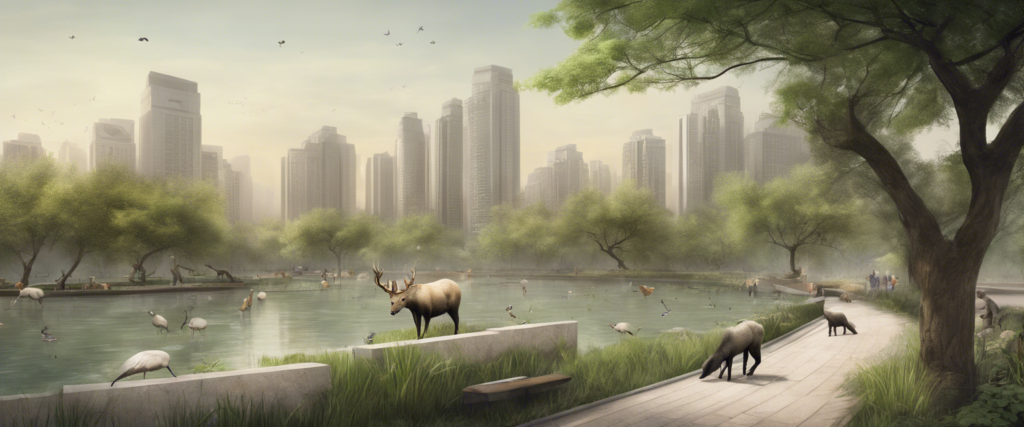
Beijing, often perceived as a bustling metropolis, is also home to a rich diversity of wildlife, thanks to its unique geographical features and conservation efforts. Here’s an exploration of the wildlife in and around Beijing, highlighting the various species, conservation areas, and opportunities for wildlife enthusiasts.
Wildlife Diversity in Beijing
1. Species of Interest
Beijing is home to a variety of wildlife species, both in urban parks and natural reserves. Some notable species include:
Mammals: The mountains surrounding Beijing host several protected species, including the leopard, leopard cat, red fox, wild boar, and the masked palm civet. The Fangshan District is particularly rich in bat species, including the Beijing barbastelle, which is endemic to the area.
Birds: The city is a hotspot for birdwatching, with over 510 species recorded. Migratory birds such as the common crane, black-headed gull, and the endangered yellow-breasted bunting visit Beijing during migration seasons. Parks and wetlands, such as those in Haidian and Yanqing, are ideal for birdwatching.
Reptiles and Amphibians: The Beijing Aquatic Wildlife Rescue and Conservation Center focuses on protecting species like the Chinese giant salamander and various freshwater fish.
2. Nature Reserves and Parks
Beijing boasts several nature reserves and parks that provide habitats for wildlife:
Songshan National Nature Reserve: This reserve is home to a rich variety of flora and fauna, including the large-flowered cypripedium orchid and numerous vertebrate species. It occupies a small percentage of Beijing’s area but supports a significant amount of biodiversity.
Beijing Wildlife Park: Located in Daxing District, this park houses over 10,000 animals from 200 species, many of which are kept in a cage-free environment. Visitors can observe and interact with animals, making it a family-friendly destination.
Beijing Zoo: Famous for its giant pandas, the zoo also features a range of other animals from around the world, making it a center for zoological research and education.

Conservation Efforts:
Beijing has made significant strides in wildlife conservation, particularly concerning migratory birds. The Beijing Forest Police have conducted campaigns to crack down on illegal hunting and trapping, rescuing thousands of birds and repatriating them to the wild.
Birdwatching in Beijing
For birdwatching enthusiasts, Beijing offers numerous opportunities:
Wetlands and Parks: Areas like the Cuihu Wetlands and Hanshiqiao are popular for spotting migratory birds. Birdwatching tours are available, and local experts often lead groups to observe various species.
Birding Community: Organizations like Birding Beijing provide resources and community support for birdwatchers, including checklists and guided tours.
Urban Wildlife:
Despite being a major urban center, Beijing’s green spaces support a surprising amount of wildlife. Parks such as Beihai Park and the Fragrant Hills are home to various bird species, squirrels, and other small mammals. The city’s commitment to increasing green spaces has helped create habitats for these animals.
Beijing is more than just a bustling city; it is a vibrant ecosystem with a rich diversity of wildlife. From the mountains that surround the city to the parks and reserves within, there are numerous opportunities to observe and appreciate the natural world. Conservation efforts continue to play a crucial role in protecting these species, ensuring that both residents and visitors can enjoy the unique wildlife that Beijing has to offer. Whether you’re a birdwatcher, a nature enthusiast, or simply curious about the wildlife around you, Beijing presents a fascinating blend of urban and natural environments.
Travel Tips for Visiting Beijing:
Planning Your Trip
Best Time to Visit: Spring (April-May) and autumn (September-November) are the best seasons, with mild weather and fewer crowds. Summers can be hot and humid, while winters are cold and dry.
Visa Requirements: Most visitors need a visa to enter China. Apply for one in advance through your home country’s Chinese embassy or a visa service provider.
Internet Access: Many popular websites like Google, Facebook, and WhatsApp are blocked in China. Consider getting a VPN before your trip to access these sites.
Getting Around
Subway: Beijing’s subway system is efficient, clean, and easy to navigate, even for non-Chinese speakers. Avoid rush hours as trains can get crowded.
Taxis: Carry your destination address written in Chinese characters, as most drivers speak limited English. Taxis are metered, and you can hail them on the street.
Walking: Beijing is a walkable city, especially in historic neighborhoods like the hutongs. Wear comfortable shoes and bring a hat for protection from the sun.
Attractions and Activities
Security Checks: Be prepared for security checks at major attractions like the Forbidden City and Tiananmen Square. Carry only essential items to speed up the process.
Forbidden City: Allow enough time to fully explore this vast palace complex, as it can take several hours to see everything.
Great Wall: Visit sections like Badaling or Mutianyu, which are easily accessible from Beijing. Consider a sunrise or sunset visit for stunning views.
Peking Duck: Don’t miss trying this iconic Beijing dish at a renowned restaurant like Quanjude or Da Dong.
Cultural Etiquette
Language: Learn a few basic Mandarin phrases like “hello” (nǐ hǎo) and “thank you” (xiè xiè). Many locals appreciate the effort.
Tipping: Tipping is not expected in China, but a small tip can be appreciated for exceptional service.
Smoking: Smoking is allowed in many public places, including restaurants and bars.
Travel Tips
Carry Cash: Many small shops and restaurants only accept cash. Have Chinese yuan on hand for subway tickets, admission fees, and smaller purchases.
Bottled Water: Drink only bottled water to avoid potential health issues. Avoid ice in drinks as well.
Travel Insurance: Consider purchasing travel insurance to cover unexpected medical expenses or trip cancellations.
By following these tips and being prepared for the unique aspects of travel in Beijing, you’ll be well on your way to an unforgettable experience in this fascinating city.
Conclusion
Exploring the Forbidden City and the vibrant city of Beijing offers a unique blend of history, culture, and adventure. Whether you’re a couple seeking romance, a family looking for fun, or a solo traveler eager to discover, Beijing has something for everyone. With its rich history, stunning architecture, and delicious cuisine, your journey through this magnificent city will be unforgettable. So pack your bags, grab your camera, and get ready for an adventure of a lifetime in Beijing!



